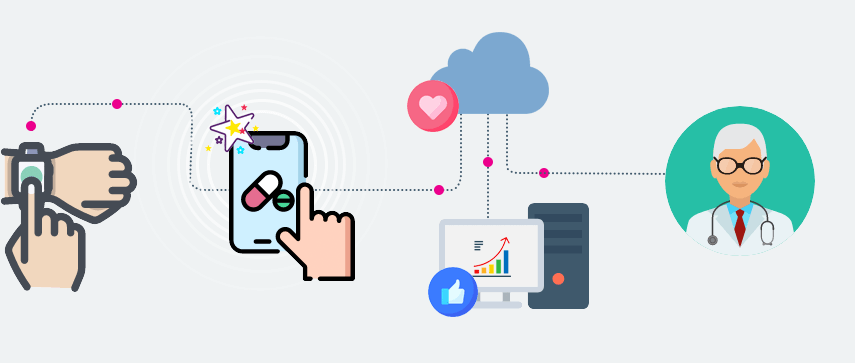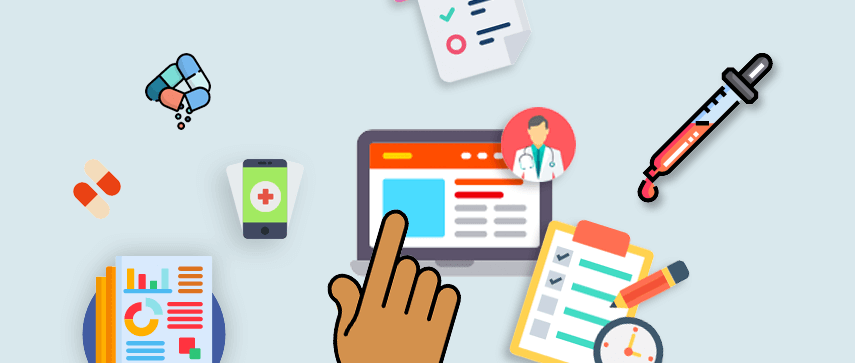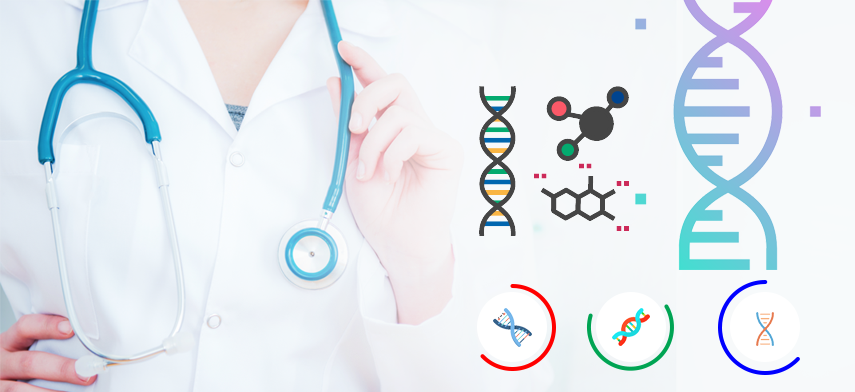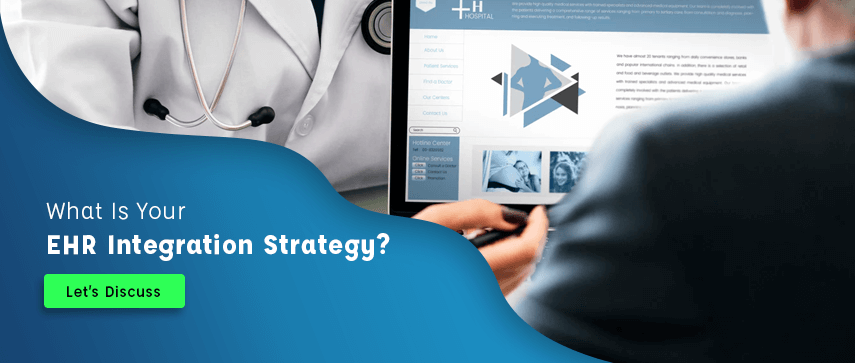Advances in technology have completely changed the way data is recorded and shared. Gone are the days of tedious and confusing bookkeeping, where most of the information got misplaced or lost in the avalanche of written records. Healthcare providers too lost no time in seizing such opportunities for improving the quality and delivery of healthcare.
EHR integration plays a key role in improving care coordination and multiple areas of care delivery. When patients have easy access to their own health records, they become more proactive about their treatments. This increases medication adherence and ultimately the treatment outcome. From the reduction of duplicative tests to a more synchronized plan of care, the sharing of information leads to better decision-making and cost-effective healthcare.
What are Electronic Health Records?
Electronic health records or EHR is the digital version of a person's medical records. But EHR is much more than just a simple record of treatment histories of a patient. The EHR system is designed to go further than collecting standard clinical data, it provides a much broader view of all the information regarding the patient’s care.
The aim of using technology to store medical data was aimed at solving four major dilemmas faced by the medical industry.
- To remove the logistical complication created by unavailable or undecipherable clinical records.
- To ensure clinical data was immediately accessible to authorized users irrespective of their location.
- To decrease the labor of clinical bookkeeping required to manage patients.
- To make a goldmine of medical records easily available for clinical and management research.
Electronic health records contain all of the patient’s medical history including various diagnoses, medications, immunizations, treatments, allergies, scans, lab results and so on. Such real-time, patient-centered software make all necessary data instantly available to authorized healthcare providers. Getting access to such a broad information base allows healthcare providers to take evidence-based treatment decisions which are more effective in getting the desired results.
3 Major Benefits of EHR Integration

As healthcare organizations progressively attempt to exchange more complex data, the focus is turning to the integration of electronic health records (EHR) for an improved flow of clinical data across the healthcare continuum.
1 Automates and Streamlines Provider Workflow
A key feature of using such digital health records is that any information regarding the health of a particular patient can be created, managed and shared by all authorized personnel across different medical organizations such as specialists, medical labs or imaging facilities, pharmacies, school clinics and so on. In a nutshell, they are a storehouse of information from all the clinicians involved in a particular patient’s care.
2 Improved Patient Engagement Using PHR
Previously, the efforts at optimizing information exchange within EHRs used to be concentrated only on improving the data transfer between providers. Patients used to be left in the dark regarding their overall care plans and their own medical history or EHR. Patient engagement was not given much emphasis and most patients received care passively. Proactive patients who initiated participation in their own care were very few in numbers.
As a result of this breakdown in data sharing, most patients tend to receive care passively; with few proactive patients initiating participation in their own care. Thankfully, nowadays EHR is becoming a gateway for improved communication between patients and providers. Patients can even participate in updating their own EHRs through Personal Health Records or PHR.
PHR is not same as EHR, rather it is a part of the EHR system that is accessed through an application like the Patient Portal and is managed by the patient personally. EHR and PHR basically contain the same information and can be viewed by both the patient and the authorized clinicians. But patients can edit or enter data in the PHR component of the system.
3 Enhanced Care Coordination Efforts
EHR integration is the key to improving the current healthcare delivery model. Data integration unifies healthcare data, both structured or unstructured, that exist on various data storage systems such as file servers or relational database management systems. Successful EHR integration along with true interoperability has a vast number of benefits, not limited to enhanced care coordination efforts, reduction in clinical errors and improvement in patient care ventures. True integration creates a strong and valuable database of information that is invaluable for identifying real-time issues using public health researches and population surveillance.
3 Keys for Successful EHR Integration

Efforts must be focused on three primary keys for achieving successful EHR integration, namely establishing an industry standard for EHR, prioritizing functional integration and utilizing use cases
1 Establishing Industry Standards
Over the last few decades, common exchange standards were used by healthcare providers to enable the exchange of electronic health information. HIPAA transformed this concept into law and established the HIPAA transactions standards. Along with the healthcare exchange rules of the HITECH Act, significant progress was achieved in the exchange objectives of interoperability. Direct Project and Blue Button are some of the other initiatives that have helped advance the traffic of electronic health information.
Various organizations that are behind developing these standards are now trying to expand the boundaries of interoperability even more with a focus on real-time transfers of health information and analytics to all providers at points of care. Application programming interfaces (API) allow authorized personnel to access the central data from within their own software applications and use their own tools to enter inputs back into the primary user’s EHR.
APIs can create platforms that collect and systematically store all the data from multiple providers or vendors to eventually promote a fully integrated digital healthcare ecosystem that gets widely adopted. Publicly available open APIs can assist further integration as they allow users to access the information with few restrictions. The U.S. Department of Health and Human Services is expected to set the standards for open APIs in healthcare, including specifications for the openly published ones.
2 Achieving Functional Integration
Having standards alone won’t facilitate integration. EHR Integration is a journey, not just an API. Along with standards that enable the secure exchange of electronic health data, health systems need to address and overcome various technical and administrative challenges to achieve effective EHR integration. According to their specialities and requirements, various health systems and vendors need to customize and configure their software for integration.
For instance, if certain providers want to enter data concerning the social determinants of health that's affecting their patient’s care, then they have to configure their EHR system to accept and systematically record such inputs. To achieve functional integration, there have to be provisioned to include and view such information of a particular patient from both the source system and the central EHR records that are available across its various users.
3 Utilizing Case Examples
Integrated electronic health records are an invaluable resource that helps physicians better manage the treatment and discharge of patients. It even allows them access to vital information that helps them prioritize ICU cases. In fact, the clinicians who are effectively utilizing this technology are wondering how they ever managed without it. Such healthcare providers are promoting and encouraging the continued use of data integration tools.
Integrated information in the EHR can prompt many clinical actions by creating priority lists of patients who may be at risk for certain diseases. Based on the available data on the integrated system, it will be easier to identify those patients who would benefit from referrals to social workers. Such an integrated EHR system will also contain information about a patient’s medications and how it helped them or not, their medication adherence issues and so on which will help design better treatment plans. Such information is also helpful in guiding patients in more effective ways to ensure compliance with medications.
3 Challenges in EHR Integration 
As the digital advancements in healthcare continue to rise up, a fully integrated EHR system that provides real-time, data-driven insight to providers at the point of care, has become an industry imperative. Though significant progress has been made in the healthcare industry’s goal of full integration, there are still many technical and administrative challenges to overcome.
Health systems ranging from consultant physicians to laboratories and even major hospitals continue to face various obstacles in implementing, maintaining and upgrading their EHR systems. These hurdles are varied and range from technical issues to security threats and human interaction challenges.
1 Technical Challenges
Effective integration means that all relevant third-party information within the EHR user interface will be made available to authorized users at the right time and place. But for this to happen, there has to be a technical infrastructure that creates the relevant information in the user interface. EHR integration requires various health system to configure their individual software to share all patient concerned information. Such technical infrastructure may require APIs that display requested data when specific screens are opened or it may provide links to third-party content worklists that contain relevant information.
Thankfully, healthcare IT regulators are promoting the implementation of standard contracts which enable the free exchange of health data using EHR and other health tools. As long as healthcare providers are ready to equip with the right infrastructure and exchange standards, technical challenges should soon be no longer an obstacle to integration.
2 Administrative Challenges
A major challenge is the lack of willingness among the key players, such as physicians, insurers, and vendors, to integrate EHR with their custom software. Most clinicians don’t want an EHR interface that’s cluttered with an overabundance of information, worklists, and alerts as this can make it difficult for them to decipher and retrieve the information they need to make the right diagnosis or treatment plans.
This problem can be resolved by enabling the users to configure their interface to view information that is most relevant to them and receive alerts accordingly. Leveraging such tools to optimize a user experience means they will still be able to integrate and utilize the EHR’s rich functionality and analytic capabilities as and when needed.
3 Privacy and Security Challenges
To get the permit for integration with third parties, health systems have to execute valid HIPAA business associate agreements. To confirm that health systems use and disclose protected health information (PHI) appropriately, HIPAA and state privacy have imposed certain security rules and limitations.
As integration and interoperability increase across the healthcare industry, it is important to establish and maintain trust. So it is imperative to ensure that strong, and effective safeguards are in place for all the electronic health information that is being recorded.
Conclusion

EHR integration no longer a luxury but a necessity. Aligning EHR integration and clinical goals for the benefit of patients and their care providers improves both patient engagement and healthcare delivery. When the providers, as well as the patients, are empowered with the right information, it leads to lowered costs, better coordination and care quality.
Patient-centric EHR integration should be an important part of a healthcare organization's mission. Integration with EHR is no longer a choice, but a matter of survival. Those organizations with an EHR integration strategy in place have a sustainable competitive advantage over those who don’t. The future is indeed looking bleak for the non-EHR healthcare software development vendors. It is clear from the business trends and the latest regulations in the healthcare industry that EHR integration is the way to a healthier future for our world.







 October 10, 2018
October 10, 2018


